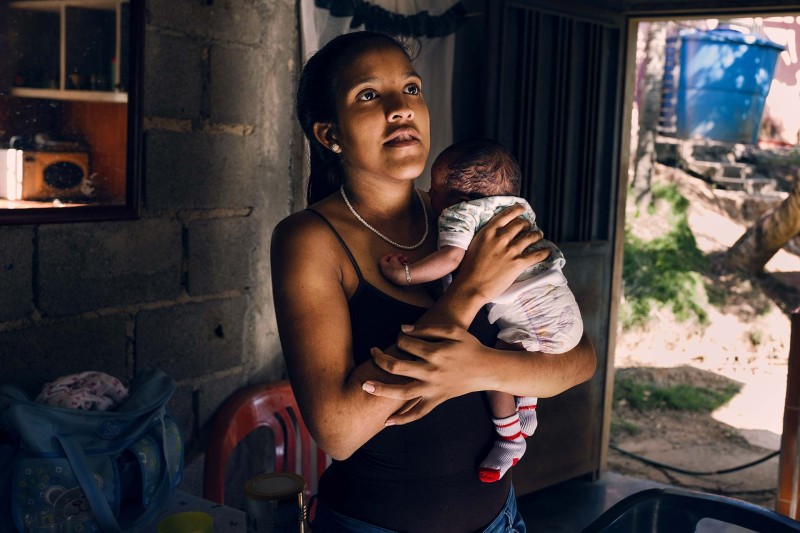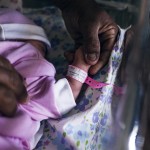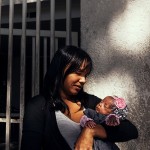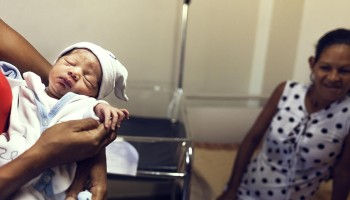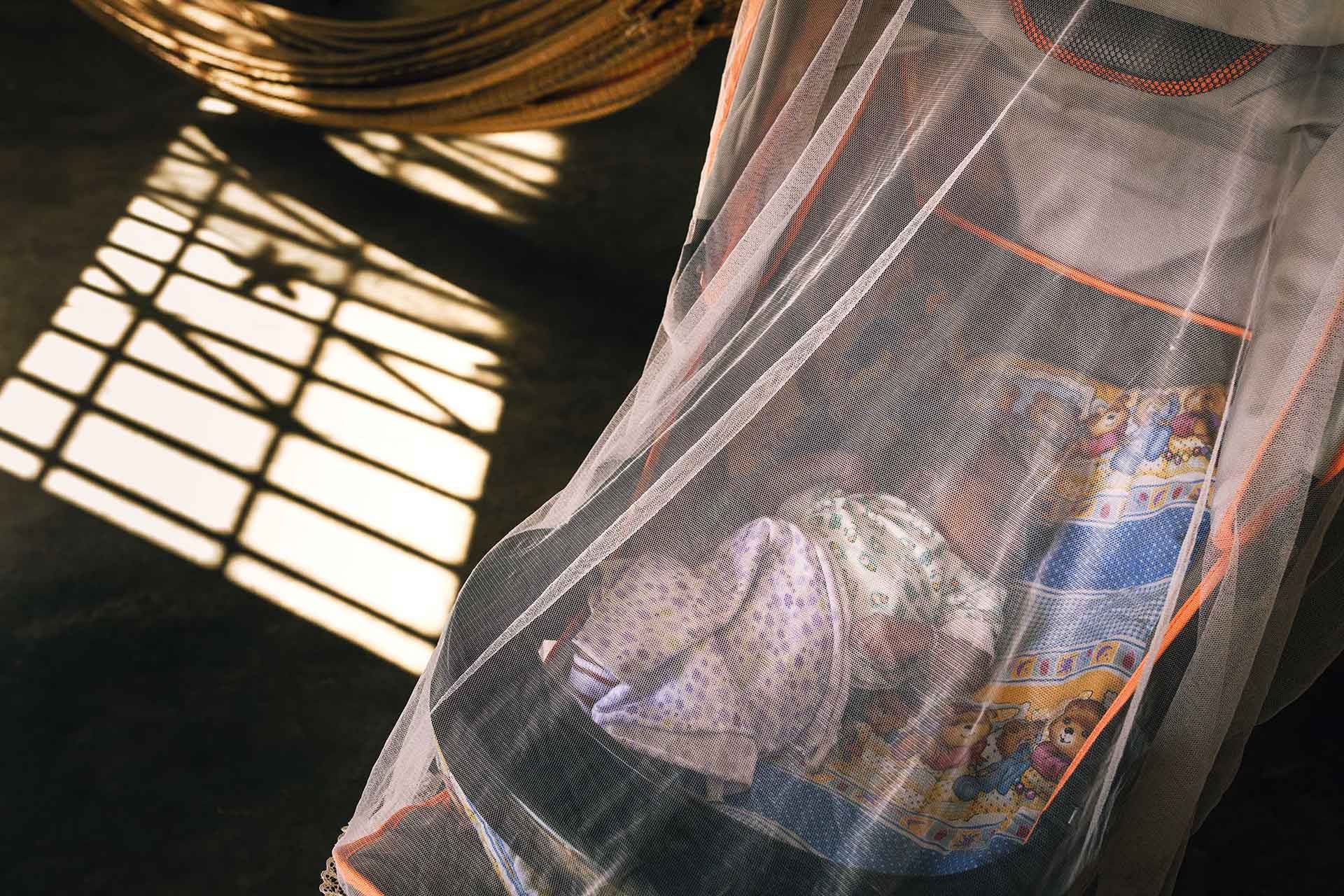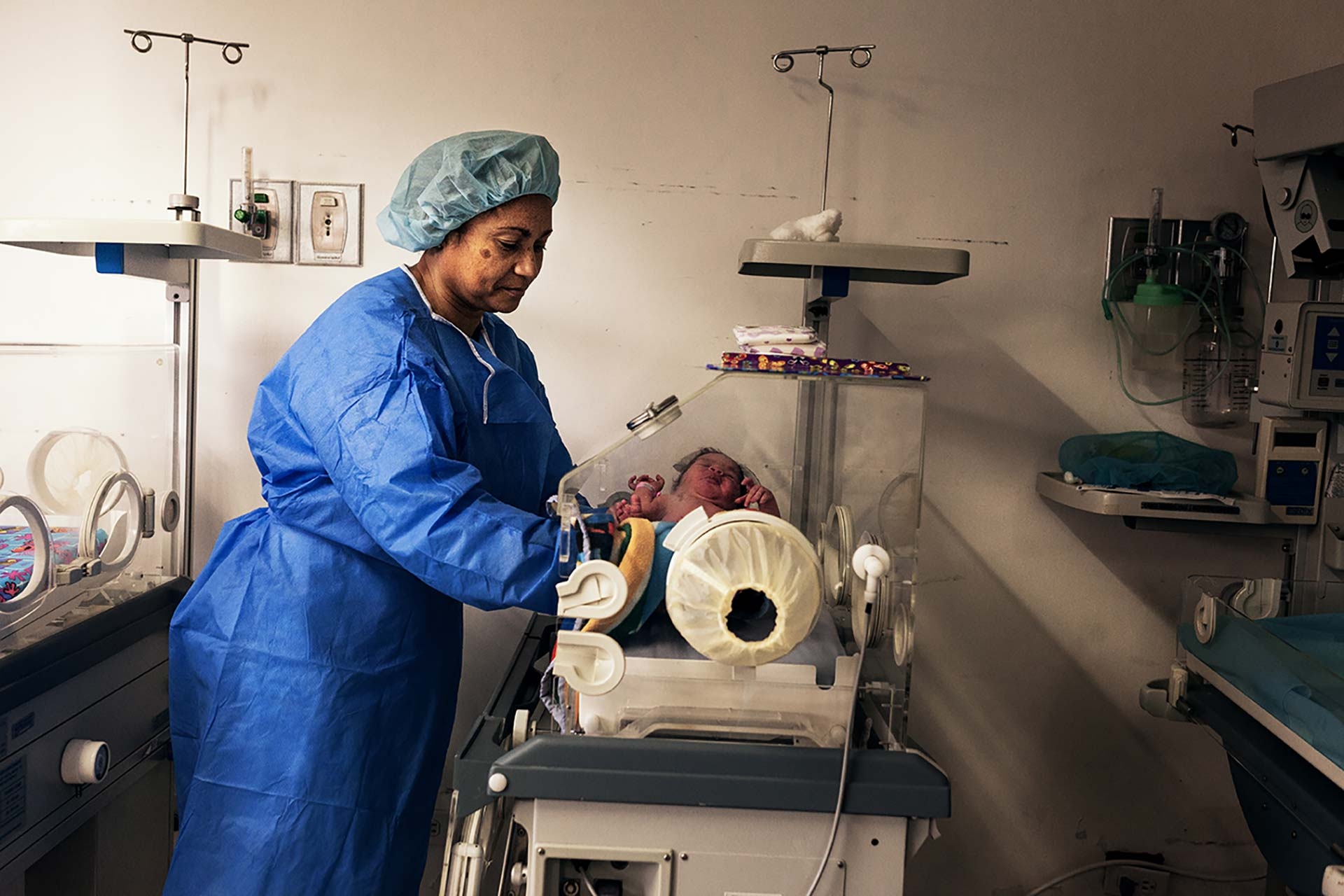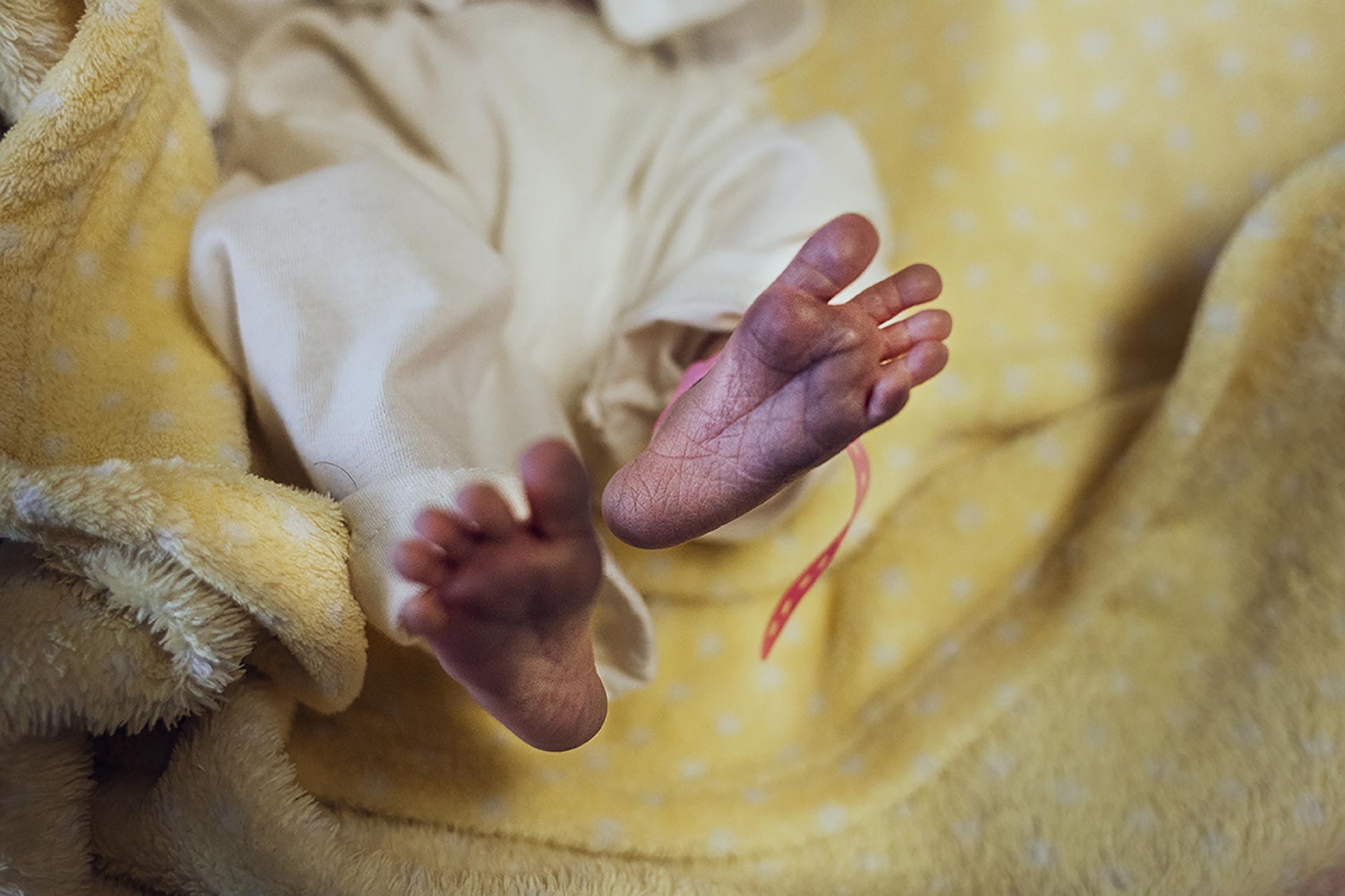Three days after release of Venezuela’s latest health statistics, Health Minister Antonieta Caporale was replaced. If the damning figures in that report were indeed the reason for her dismissal, that would be in keeping with the government’s attitude that there is no problem. Officials in Caracas aren’t just trying to hide the extent of the humanitarian crisis; some of them have dismissed its very existence.
Caporale’s report revealed that maternal mortality in Venezuela had increased by almost 66 percent and infant mortality by over 30 percent since the previous year, despite the government having launched several healthcare programs aimed at pregnant women.
The special programs, four in the last 12 years, are aimed at helping pregnant women and their babies but have largely failed despite being launched with great fanfare. They were hamstrung by shortages of medicine, nutrients, doctors and other resources in the healthcare system and by chronic shortages of affordable food for the country’s poor and working class citizens. Malnourished Venezuelan mothers are giving birth to babies that are underweight, in poorer health and with less of a chance to survive than if they had been born in a neighboring country.
Reporters from Efecto Cocuyo, a partner of the Organized Crime and Corruption Reporting Project (OCCRP), went in search of the human stories behind these stats. It found the Venezuelan state has yet to implement much of what’s been advertised, and pregnant women in poverty are still waiting.
A Dead End for the Maternal Route?
One such program was the Ruta Materna (Maternal Route) plan, announced with a flourish in August 2015. “We will do follow-ups for the pregnant woman and her child, we will vaccinate the baby, they will go to their regular check-ups,” promised then Vice Minister of Health Claudia Moron. “We will guarantee [nutritional supplements] like folic acid, iron, and all the necessary vitamins during pregnancy.”
Ruta Materna sought to reduce the alarming figures recorded in the previous year: in 2014, Venezuela’s maternal mortality rate (MMR) reached 72 per 100.000 live births; 438 babies lost their mothers, and 24 percent of babies were born to teen mother. Nevertheless, the rising numbers kept on growing. In 2015, the MMR was estimated to have grown to 95 and 456 women died for causes related to pregnancy. In 2016, the figure was even higher: 756 dead mothers.
A Helpline Without a Clue
Ruta Materna was met with great acclaim and has no shortage of official participants. The General Directorate for the Articulation of Health Programs, Services, and Networks of the Health Ministry is responsible for its coordination, alongside other government ministries and the office of the presidency.
A key planned efficiency of Ruta Materna was to link it more closely with 2003 program called Mision Barrio Adentro, Venezuela’s public healthcare system that ask local community organizations to provide preventative healthcare aimed at improving the lives of people living in the Barrios – Venezuela’s poor shantytowns. The program has been directed and executed by Cuban doctors since it was first introduced in 2003.
Barrio Adentro was a bold undertaking from the start.
But Venezuela’s state healthcare system has been in near collapse due to poor funding and mismanagement putting the clinics of Barrio Adentro under even more pressure to meet basic healthcare needs.
Over two and a half years after the announcement of Ruta Materna, health indicators have not improved. Official figures reveal that a total of 8,812 children died in 2015, and that 11,466 children died the following year, with increases of 30.1 percent in infant mortality between 2015 and 2016.
Jose Felix Oletta, who headed the Health Ministry in the late 1990s, said the national healthcare plans has suffered from confusion over what it was supposed to do and how. “Barrio Adentro went from being about health promotion and education to a very poor-quality care center, despite the investment in resources,” he said.
There were many examples of corruption in the system. In annual reports for 2011 and 2013, the Comptroller General’s Office noted delays and administrative irregularities in 1,235 construction projects at outpatient care centers in the country. But, despite the program’s demonstrable flaws, the government has doubled own on the same Cuban-administered public healthcare system.
Nevertheless, the Venezuelan government presented a glowing picture of Ruta Materna to the United Nations Human Rights Council in 2016. In the review, the state identified the introduction of the Maternal and Child Capitation Monitoring System (via 0800-Materno, See Box) and Ruta Materna as the main tool to reduce maternal and child mortality and promote humane childbirth.
“Comprehensive care for pregnant women has been a priority for the state. However, an evaluation of the programs is necessary … For the correction of key points,” said the Venezuelan government in its report for the United Nations’ Universal Periodic Review. The following year, only 19.2 percent of the poorest pregnant women received prenatal care from the first month, according to the results of the National Survey of Living Conditions of the Venezuelan Population (Encovi).
Born in El Valle, languishes in El Valle
Angely Diaz’s daughter was the last infant born in 2017 at the Concepcion Palacios Maternity Hospital, a happy event celebrated annually by Venezuelan media.
On Dec. 31, at 11:25 p.m., 17-year-old Diaz gave birth to her second child, who was born weighing about 2.3 kg. She had her first when she was 14 years old. A picture of Diaz, her husband, and her daughter Freddyangely appeared in a number of newspapers.
The family lives in a remote rural area between the towns of Cua and Tacata, in the Valles del Tuy around 60 kilometers south of the capital, Caracas. They don’t have a kitchen. They don’t own a refrigerator. The cinder block house, which they rent from a relative, is on the side of the road about 74 kilometers from where Díaz gave birth. When the teenager went into labor on Dec. 30, the family had no access to public transportation so they had to take a taxi.
As soon as she started feeling pain, Diaz went to the nearest hospital, the Dr. Rafael Osio Hospital in Cua. But there was no anesthesiologist there. She was told to leave because they would not be able to perform a Caesarean section in case she needed one.
A Caesarean was a real possibility since she had needed one during her first delivery. Unable to help her, the hospital provided one of its ambulances to take Diaz to Caracas. “The ambulance left us there, at 9 p.m., without waiting for someone to help us ... But I wasn’t admitted to the Caricuao Maternal Child Hospital either because there was no anesthesiologist,” she recalls.
The heavy rain worried Diaz even more. She was thankful her mother remained with her throughout the ordeal, but more than three months later she is still shaken by the memories of that night.
“We went to Los Magallanes de Catia Hospital. We had to pay 120,000 bolivars (US$1.72) to a taxi driver. They gave me an internal examination and told me that I was ready to deliver my baby, that I did not need a Caesarean, that my pelvis could handle the procedure. They did not take into account what the doctor at the Dr. Rafael Osío hospital had said about the possibility of having an emergency Caesarean if there were complications in the delivery.”
Given her history, the doctors felt that Diaz should go to a hospital that could handle an emergency Caesarean should it be required. The journey continued on Dec. 31: “Around noon we traveled to El Valle [a district of Caracas], to the Hugo Chavez Maternal and Children’s Hospital, and there, they also told us that there was no anesthesiologist .” The doctor did, however, acknowledge the possibility of an emergency Caesarean.
Yet three hours later, Diaz received no assistance at the hospital in El Valle. With the pain getting worse, she and her mother set out for the fifth hospital of her journey.
Birthplace of Ruta Materna
On the door of an office located at the Health District Number Four in El Valle, a banner reads “Ruta Materna.”
Lucia Fermozo, the district’s medical director, says that Ruta Materna was born in the area, and admits that the continuous rotation of experts has hurt the project. “Doctors have left, doctors have arrived, but those who arrive are not as familiar [with the program],” she laments.
She says the program has a shortage of nurses and other health care professionals: “With help from the health committees the doctor will be able to know, for example, how many pregnant women there are in the community.”
Richard Acevedo, whom Fermozo calls “the father and mother of Ruta Materna,” has run the program since its creation. But the initiative has changed names so many times that when he is asked about SICASMI (initials that stand for the Maternal and Child Tracking and Monitoring System), a key part of Ruta Materna, he asks, “What is that?”
Acevedo keeps Excel tables with data on pregnant women who are being assisted in his health district. The number fluctuates between 22 and 30 women each month. He later uses this information to contact them for follow-ups.
Fermozo suggests that Acevedo’s tracking techniques should be adopted by the other three Health Districts. But, says Acevedo, “After Ruta Materna’s joint health network of four districts was established, the coordination between them was going to be outlined. For example, if a pregnant woman needed specialized attention in a specific area that was not covered by one of the districts, she would be transferred to one of the others that could provide it … But that never materialized.”
The health officials try hard not to seem pessimistic. But Acevedo notes another gap in the system: “After they give birth, they just disappear; they should get postnatal care.”
Diaz did get vitamins from Barrio Adentro’s Comprehensive Diagnosis Center, located in Tacata, near her home. But she is an exception and the only pregnant woman who got them among the 14 interviewed for this article.
It is also unusual that Diaz’s malnutrition and young age did not more severely impact her child’s health. Diaz’s father works at Mercal, the government network that distributes food. She says that without her father’s help, she would live in even worse poverty.
The failed missions
A high-level official from the Health Ministry directly involved with Ruta Materna gives a blunter evaluation of the program that was presented by the Venezuelan government to the United Nations in 2016.
“This strategy wasn’t fulfilled. It’s not implemented. There is a lack of resources, an absence of commitment from the part of personnel at the medical centers. And we will not waive that responsibility from the [Health] Ministry because it is the head and should supervise that the goals are met,” says the official, who asks not to be identified.
“For Ruta Materna you need ambulances, channels of communication, and response from the hospitals. With the economic crisis, there are now less supplies, transportation … For example here at the [Health Ministry] office we don’t have cars, not even a motorbike. And at the hospitals, a number of ambulances are junk. All of this plays a role.”
Micronutrients aren’t enough to keep a poor pregnant woman healthy, the official says. “They need to have a complete diet. Iron and folic acid is not enough, they need to eat well.”
For Ruta Materna to work properly, all the actors must work together, but this remains a distant goal, the official says. “Everybody does what they want. For example, a patient in the Valles del Tuy goes to one of the care centers and they tell her to give birth wherever she wants.”
In addition, officials are constantly coming and going. “This year, we have had three ministers [of health]. We begin working on a project and then there’s a new minister, a new vice minister, a new director. And if these new authorities do not like the strategy being used, then they change them all over again.”
The government has not released recent statistics on the program or its effectiveness.
New Promises, Old Failures
There has been no shortage of promises by the Venezuelan government. These often traditional come during holidays such as Christmas, Carnival and Youth Day.
On March 12 2017, President Nicolas Maduro announced the CLAP Maternal project, to be implemented through the state food distribution system run by the Local Supply and Production Committees.
Under the initiative, pregnant women would receive additional goods, such as diapers, milk, and baby clothes. Although the program was to have started in July, there is no evidence it is functioning.
The government also announced the somewhat redundant Mision de las Barrigonas Felices de Venezuela, (literally translated as Venezuela’s Happy Big Baby Bump Women Mission) to help low income women during pregnancy.
These new promises aim to revive strategies that failed in the past.
The Hugo Chavez Maternal and Children Hospital in El Valle is a living monument to Hugo Chavez. The hospital’s personnel treat about 5,000 cases each month. Pictures of Chavez cover the walls, doors, and windows of the facility. Interspersed is advertising for Chavez’ Mision Nino Jesus (Baby Jesus Mission), a 2010 plan to provide pregnancy care.
Nino Jesus has become a distant memory, eight years after it was launched. “We have kept the posters and images because they are beautiful, and it would be very expensive to remove them… [but] Nino Jesus is no longer providing services,” says the hospital’s director, Juan Jose Luchon Vasquez.
Vasquez doesn’t wear a white coat, but he is an obstetrician. He does not wear a military uniform, but he is a senior military officer for Venezuela’s armed forces. And in his office, he displays posters of Chavez and President Nicolas Maduro.
The hospital provides pregnant women with the supplements they need, says Vasquez, including calcium, folic acid, iron, and vitamins. But a visit to the hospital’s third floor uncovers a different story. “Noooo, mi amor! We haven’t had any of that in here for more than a month,” said one of the workers through a window.
Nino Jesus, it seems, has gone the same way as Ruta Materna.
A bad start, a difficult ending
Before his death in 2013, Chavez outlined his “Plan de la Patria 2013-2019” (Plan of the Nation), which aimed to provide full medical coverage through Barrio Adentro. It also looked to reduce the maternal mortality rate to 37.3 per 100.000 live births; drop the child mortality rate for children under 5 to 11.7 per 1,000 live births; and guarantee a life-long healthy diet and adequate nutrition for all Venezuelans.
Things haven’t worked out that way, and Ruta Materna has turned out to be a dead end.
The increase in maternal and child mortality, the inability to make the healthcare system and the community organizations work together, the worsening shortages, and the increasing cost of food and medicines, are all the cause of the programs’ collapse.
A Happy Ending, Despite the Odds
A day after leaving home, Diaz and her mother decided to go to the Concepcion Palacios Maternity Hospital in Caracas, the country’s top facility. She was exhausted and nervous. Finally, she gave birth normally, at the fifth hospital she visited.
On Jan. 1, 2018, officials from the Capital District visited Diaz at the hospital to welcome the last baby of the year. They gave her a stroller, a playpen, and a basket with two packs of disposable diapers and two recyclable diapers for the newborn. The officials handed her 500,000 bolivars (about $7). They also promised her a new home, through the social program Gran Mision Vivienda Venezuela (Venezuela Great Housing Mission) as well as a better job for her husband.
Diaz’s pregnancy was unplanned and resulted from a shortage of birth control pills and other contraceptives in the country. Although women are advised to start taking vitamins three months before conceiving, she only realized she was carrying a child five months into the pregnancy.
Diaz and her husband are still waiting for what the government promised them on the day their family picture was all over the news. They haven’t received a phone call about a new home or a better job. They both want to study and work. They want a better life for their children.
